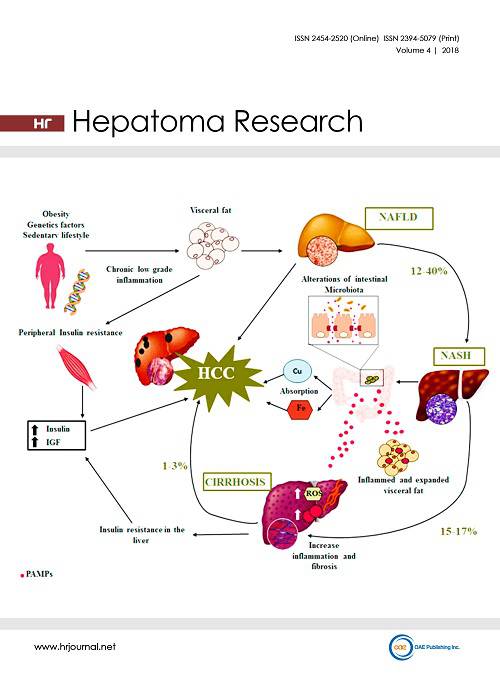
Volume 4 (2018) – 75 articles
Cover Picture: Obesity and diabetes are associated with the onset of hepatocellular carcinoma (HCC). These two illnesses correlate also with the development of non-alcoholic fatty liver disease (NAFLD). Currently, NAFL is considered the leading form of chronic liver disease in the Western industrialized countries. Insulin resistance is the common pathogenic factor among these three pathologies. NAFL is characterized by fat accumulation in the liver that involves greater than 5% of the liver parenchyma with no evidence of hepatocyte injury. However, NAFL may progress toward non-alcoholic steatohepatitis that in turn may lead to advanced fibrosis, cirrhosis and HCC. It is alarming that NAFLD related HCC has been, at present, considered as a growing burden worldwide, and its prevalence is tending to further increase together with the increasing incidence of obesity and diabetes. Worthy of note is that in the presence of chronic accumulation of fat in the liver it has been reported the emergence of HCC during chronic liver disease in absence of liver cirrhosis, usually the major risk factor for the development of HCC. Thus, in the future NAFLD related HCCs will place a growing strain on health-care systems from the need for their management. Unfortunately, most of the NAFLD related HCC patients are diagnosed at advanced stages and are characterized by a poor prognosis, because they are ineligible to radical treatments. Thus, it is urgent to boost up new screening policies to make early diagnoses, as well as to develop preventive-therapeutic strategies.
view this paper
Read Online Viewed:
Download This Volume Viewed:







